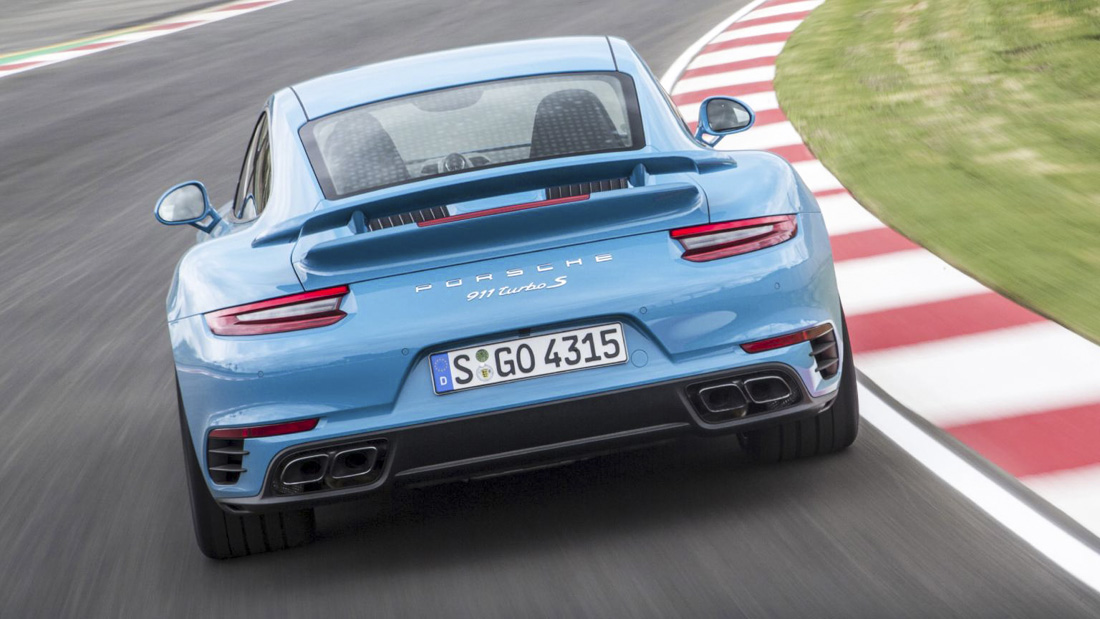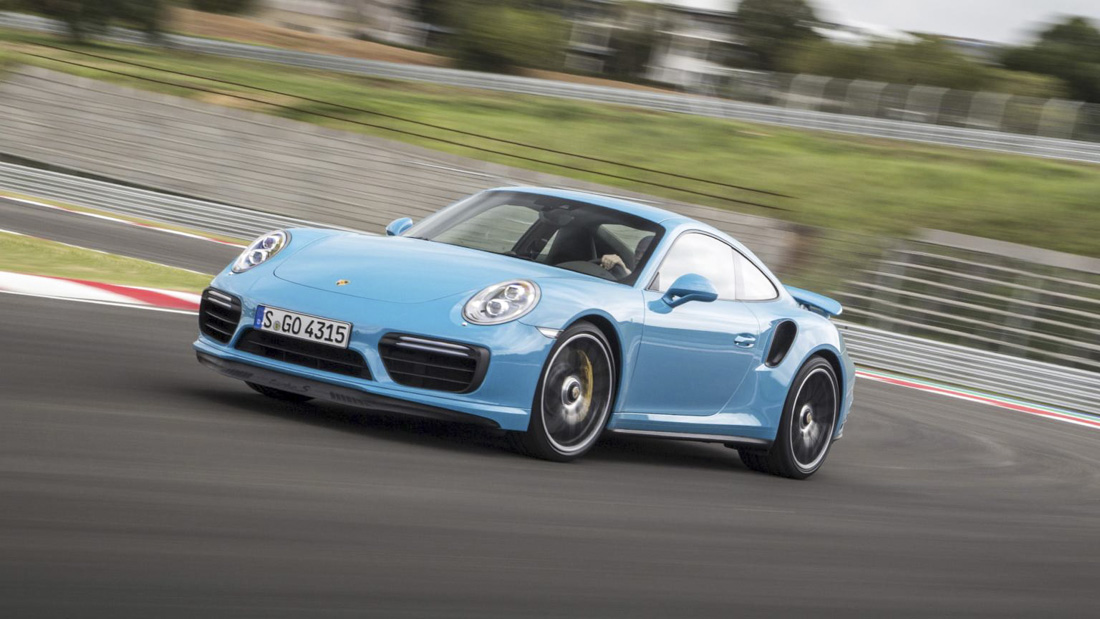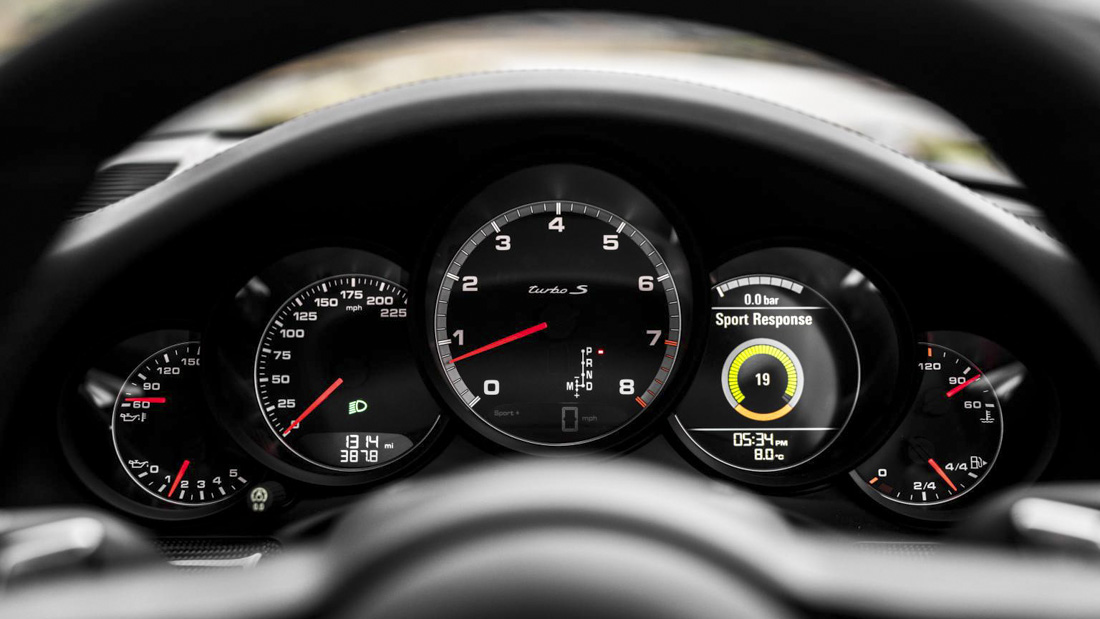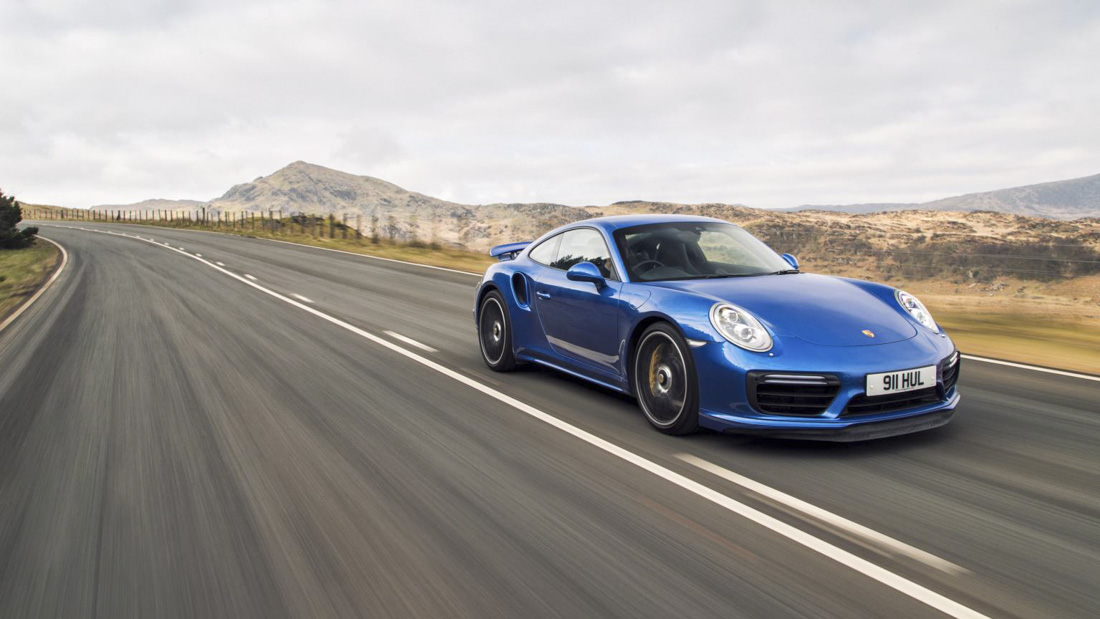
Let’s start with an irrational but completely possible situation.
Imagine you’re someone who has, I don’t know, just retired from a successful career in dentistry or something. Over the years, you’ve put so many fillings and veneers in people’s gobs, your wallet is overflowing with one hundred and fifty-ish thousand pounds. You want a car, a fast one, but what should you go for?
Before you start, there are a couple of must-dos from your new car. You don’t want anything overly ostentatious, or the same colour as a children’s lunchbox, so that automatically discredits anything from Italy. The McLaren 570S and its flashy doors is a bit fancy. Audi R8? Oops, I forgot. You have young children that you’d like to take along with you, so that’s a no-go too. “The Nissan GT-R then! Surely?” Sorry, too cheap. Hashtag first world problems and all that.
There’s only one sensible car left: the Porsche Turbo S. It’s the original gangster of the everyday supercar. A car that offers effortless GT appeal and pulverising performance, all within a purposefully muscular yet wonderfully austere and mature package.
With a 3.8-litre twin-turbo lump slung over the back axle, both the new Turbo and Turbo S have had a power bump of 20bhp compared to the last generation. That means 533bhp in the Turbo and 572bhp in the Turbo S. That makes the latest 911 Turbo S capable of tipping over the double ton with a blistering top speed of 330kmh.
Big, scary numbers those. But on the road, when driven normally, it’s an incredibly docile car. Slot the PDK gearbox down to Drive, keep everything in its factory setting, and you can cruise in comfort for hours. Even with a wide track and tyres, it’s well-mannered on our pitted roads. Plus, with the new intuitive and ergonomic PCM entertainment system – starring Apple CarPlay – your creature comforts are easier to use than ever.
But with all that power, and the sheer ease of use, the Turbo S could lull you into travelling at speeds that you just didn’t think relevant, or actually possible. It’s just far too easy to go fast in. Eventually, this would see your driving licence being fed through a police station shredder and you having some long lonely nights in a cold cell away from your children. Bad times.
So, in the real world, you end up using approximately three per cent of the cars potential, 99 per cent of the time. And because it doesn’t make much noise or have a manual gearbox, there’s not much in the way of engagement at slow speeds. Some people deem this boring.
However, having spent a full day flogging the Turbo S around the TG Test Track – in both the wet and dry – I now want to campaign for more of the top-shelf production Porsches to be put on circuit.
See, you rarely see a Turbo S at a trackday. Porsche’s very serious, motorsport-derived GT products are normally the go-to cars for blatting around Brands Hatch and the like. But with four-wheel drive, and no parts nicked from a Le Mans car, the Turbo S is somehow neglected.
This should change for a few reasons.
Firstly, if you go into the nitty gritty details of the Turbo S, you realise that it’s the most track-focused it’s ever been, without stepping on the toes of the guys at Weissach. Courtesy of modified inlet ports, new injection nozzles and higher fuel pressure, plus different, larger turbos, for once the S actually has a different set up to its boggo Turbo brother. There’s also a new traction mode honed especially for the racetrack. With a stab of the traction button, the traction nanny’s tie is loosened to allow the car to massage you into looking like a hero even if you aren’t one.

Just like Ferrari’s voodoo ‘Side Slip Control’, sensors measure how much you’re oversteering. If you’re applying the right steering correction, it’ll allow the rear wheels to keep spinning up. At this point, normal anti-skid control systems cut the power. But, if you’re doing the right things, the Porsche will keep feeding you power. If you’re doing it wrong (haven’t countersteered enough, or you’re using far too much throttle) it’ll slap your wrist and take the power away from you.
Purists will be spitting feathers into their keyboards right now, mainly at the fact the Turbo S doesn’t send its power solely to the rear wheels. Well, calm down. Because that doesn’t hinder big smokey skids.
Actually, we found that the Turbo S is probably fastest car for going sideways currently on sale. With everything off, where cars normally lose speed drifting, the Turbo just keeps ploughing on. Want to straighten up? Straighten the wheel and more throttle. Bigger skid? A bit more lock and more throttle. A lot of the time on track, the answer to your question is ‘more throttle’. Now who can call that boring?
Put silly skids aside, and that four-wheel-drive scrambles around for grip so effectively it can make for a killer lap time. Having hooked the Turbo S up to our data equipment, we found it consistently did 0-100kmh in 2.7 seconds, would charge on to a 161kmh in 6.2, and stop dead from there in 3.7 seconds with the stupidly powerful ceramics. And round Dunsfold, if it were put in the hands of Stig, we wouldn’t be surprised if it was hanging onto the bumper of the much more serious, more racecar-like GT3 RS.
It’s an effective sniper of performance. With the engine always chuntering on quietly, it doesn’t go about going fast in a shouty way. But the vast slug of torque on offer, oodles of grip of and rear-wheel-steering – perfect for longer, high-speed corners – allowed us to gattle-gun through the gears out of Hammerhead and fire it through the Follow Through at 200kmh. Faster than anything we’ve taken through there before.
Inside all new Turbos you now get the racy Sport Chrono Package as standard, as well as a new steering wheel nicked from the 918 Spyder. At five o’clock on the wheel there’s a little rotary knob that allows you to switch between Normal, Sport, Sport+ and Individual modes. In the centre of that dial is ‘Sport Response’, which when pressed, initiates DEFCON 1.
The turbos boost, the PDK ‘box finds the best gear and most aggressive response profile, and the entire car jacks up to give you its’ all. However, that lasts for just 20 seconds before everything wilts back to normal operation. Which is disappointing and makes it feel a bit gimmicky. We want that all the time, Porsche. You hear us?

So does the Turbo S lack character? Well, if the giggles erupting from our mouths after many, many laps in it are anything to go by, the answer is no.
It just needs to be put in the right environment to be properly let loose. It’s the four-wheeled equivalent of your timid mate: he’s got a good job in the city that he takes very seriously, but after a couple of pints he’s doing things that’ll get him on The Lad Bible the next day.
So if you do own a Turbo S, or are thinking of owning one, make sure you take it to a track. That’s when you’ll see the true colours of what you’ve really bought. Believe us, it’ll be completely worth it. Mainly because you’ll smoke some other very serious, uncompromised bits of kit, then cruise home in complete comfort.
- Rowan Horncastle

